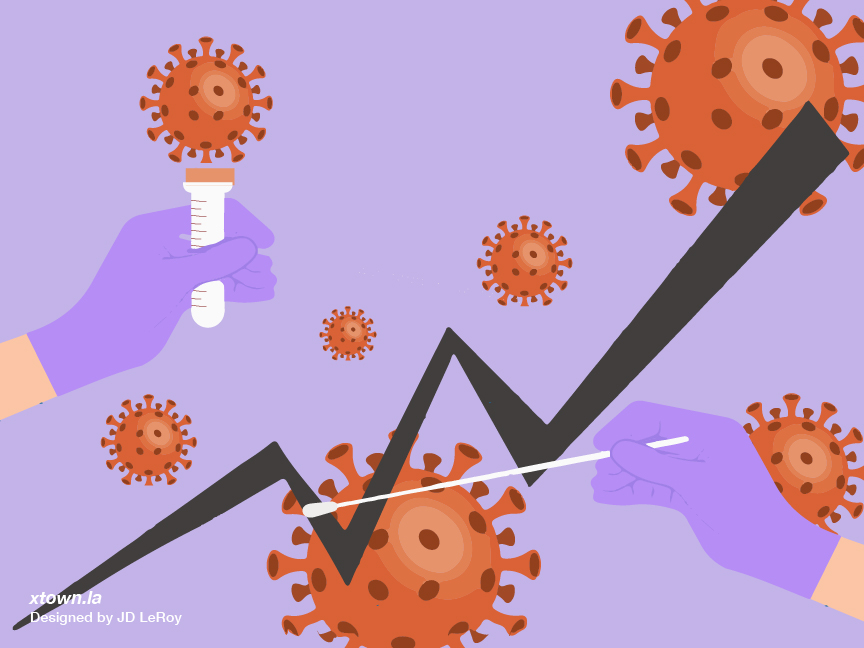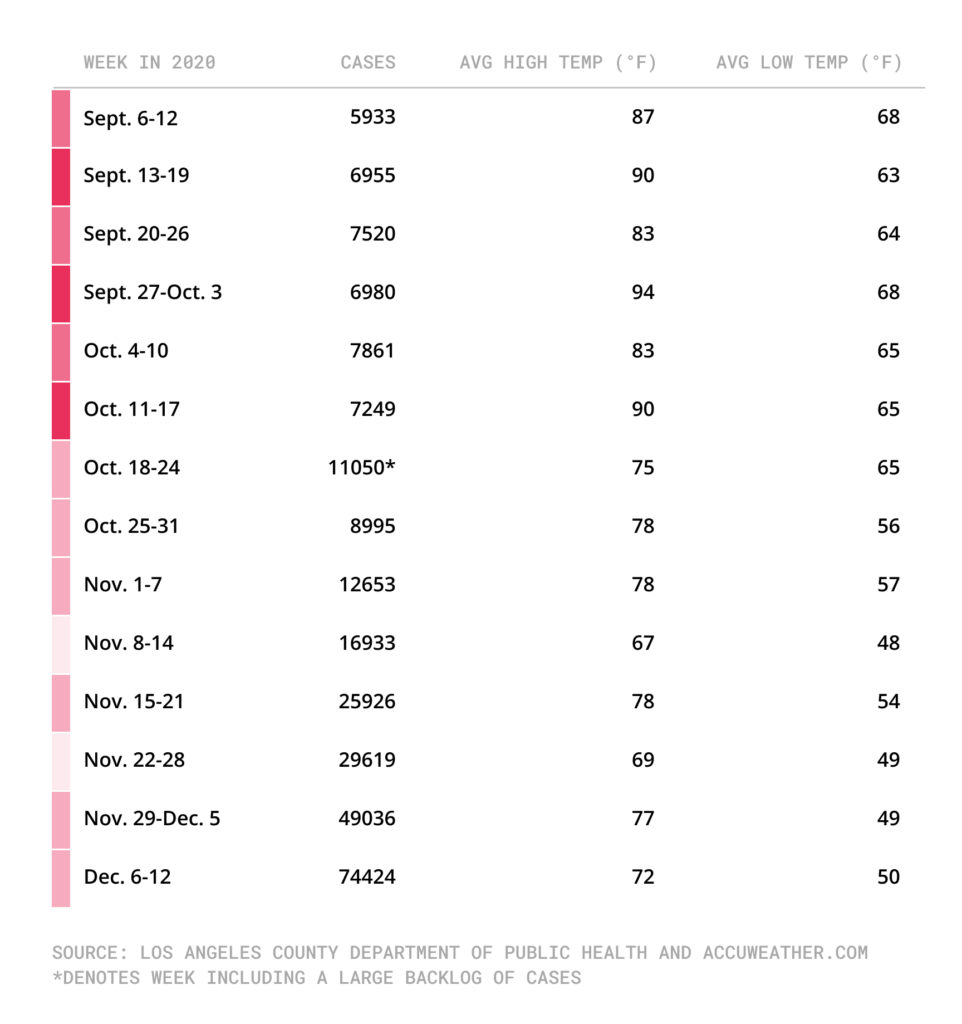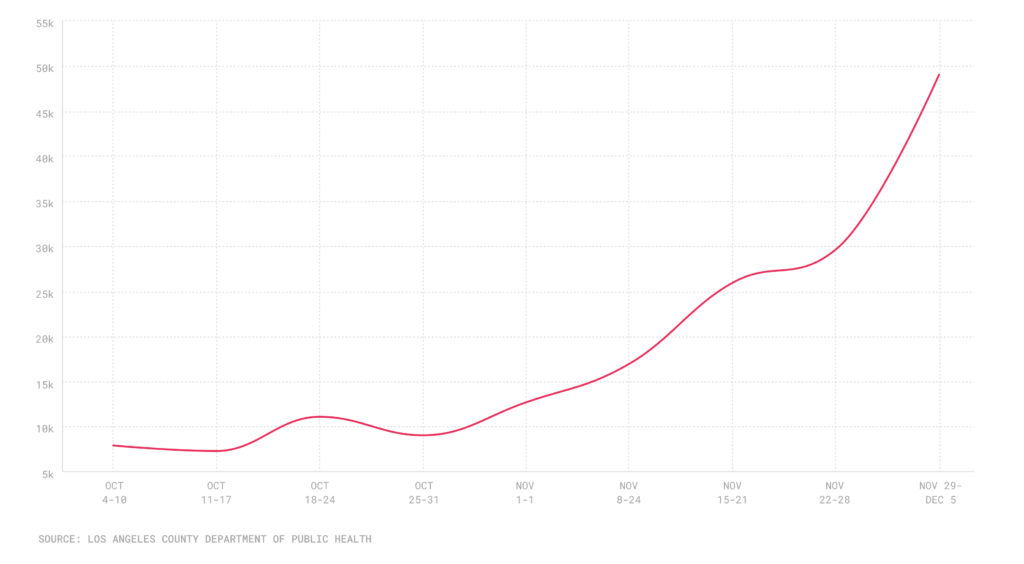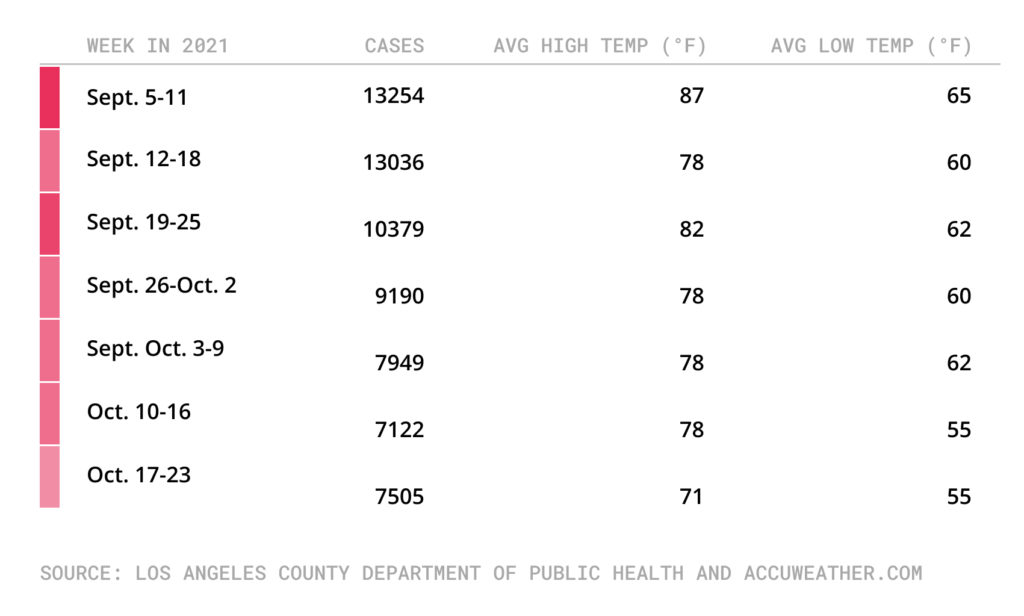COVID and the cold front

One year ago this week, Los Angeles’ harrowing COVID-19 winter surge began. Although few realized it at the time, the rise in new cases came the week after the average temperature fell.
It was the first indicator of a frightful reality: Colder weather forces people indoors, where the coronavirus, like the winter flu, is more easily transmitted. That was borne out as more than 775,000 coronavirus cases were diagnosed and over 13,700 county residents died of COVID-19 from December through February.
Although much is different now—starting with the fact that 71% of eligible county residents are fully vaccinated, and 79.5% of Angelenos have received at least one shot—the mercury has begun to fall. And the region just saw its first weekly increase in cases since early August, according to data from the Los Angeles County Department of Public Health.
[Get COVID-19, crime and other stats about where you live with the Crosstown Neighborhood Newsletter]
Recently, Director of Public Health Dr. Barbara Ferrer warned of the risks that lie in the months ahead.
“We still need to lower the number of new cases so that we enter the fall and winter seasons in the best possible shape to avoid the devastation we endured last year,” Ferrer said on Sept. 25. “We typically see respiratory viruses flourish with the colder weather and when we move activities indoors.”
Low-case period
For much of last September and the first half of October, Los Angeles County’s weekly number of new coronavirus cases remained relatively low and stable, about 7,000-7,800 each week. For most of this period, the climate was balmy, with daytime highs in the 80s or 90s, and evening lows in the mid-60s, according to data on Accuweather.com.
Weekly coronavirus cases and temperatures in Los Angeles, Sept. 6-Dec. 12, 2020

Over the next few months, a drop in temperatures one week was often followed by a rise in cases the next, indicating that people may have been more frequently congregating indoors. For example, the average daily high temperature in the week of Oct. 18-24 was 75 degrees, down from 90 the week prior.
The next week, Oct. 25-31, the county recorded 8,995 new cases, up 24% from the 90-degree week.
Weekly new coronavirus cases in Los Angeles County, Oct. 4-Dec. 5, 2020

The surge accelerated after that, the change in weather often soon followed by more people contracting the virus. From Nov. 8-14, the average daily high was 67, and the average low was 48. This compared with an average high of 78 and an average low of 57 the week before.
The next week, from Nov. 15-21, almost 26,000 cases were diagnosed, representing a one-week spike of 53%. Transmission and the positivity rates quickly kicked up (also due in part to Halloween and Thanksgiving gatherings). From Dec. 6-12, 74,424 new cases were recorded.
The present
Los Angeles is not automatically in for a repeat of last winter. In addition to widespread vaccinations, there are many mask mandates. Awareness of safety protocols generally remains high.
Still, the county last week recorded its first increase in new cases in more than two and a half months. It was a modest gain, just 5.4%, to 7,505 new infections.
Weekly coronavirus cases and temperatures in Los Angeles, Sept. 5-Oct. 23, 2021

But the uptick coincided with a change in the weather. A heat wave that had daily highs in the 80s and 90s during the first few days of the month was followed by a period from Oct. 7-13 when highs were mostly no more than 73, and evening lows on five of those days fell into the 50s.
The possibility of a backslide has elected and health leaders urging action. As he received a Moderna booster shot on Wednesday, Gov. Gavin Newsom called for eligible Californians to get their next dose.
“It’s imperative that we all keep our immunities strong in preparation for the winter cold, flu and now COVID season, especially for those at increased risk,” he said in a prepared statement.
That may be coming at the right time. Although today and Thursday were unseasonably warm, the Accuweather forecast calls for much cooler temperatures starting on Halloween.
How we did it: We examined coronavirus data from the Los Angeles County Department of Public Health. We also examined archived daily high and low temperatures on Accuweather.com.
Interested in our data or have a question? Email us at askus@xtown.la.






